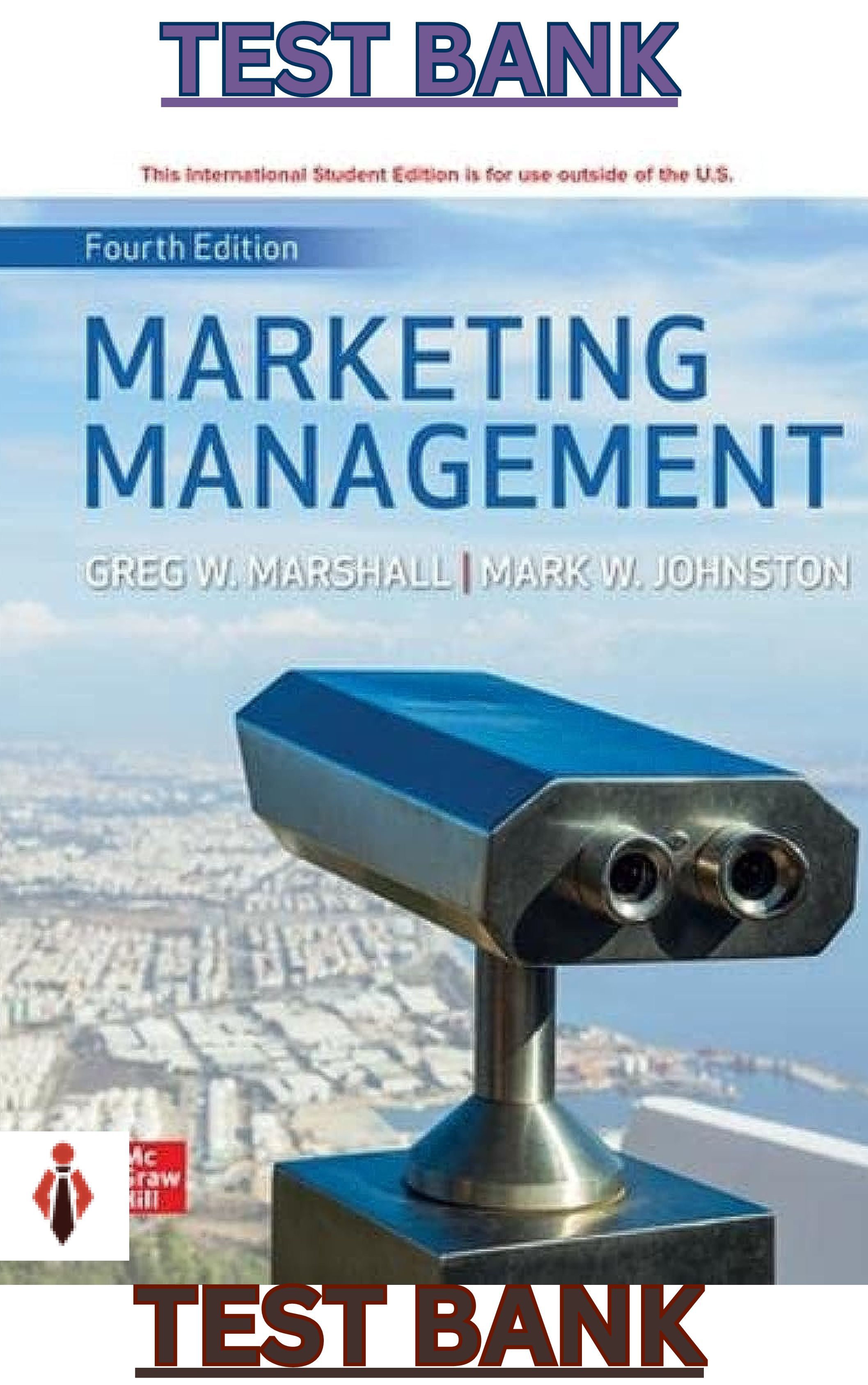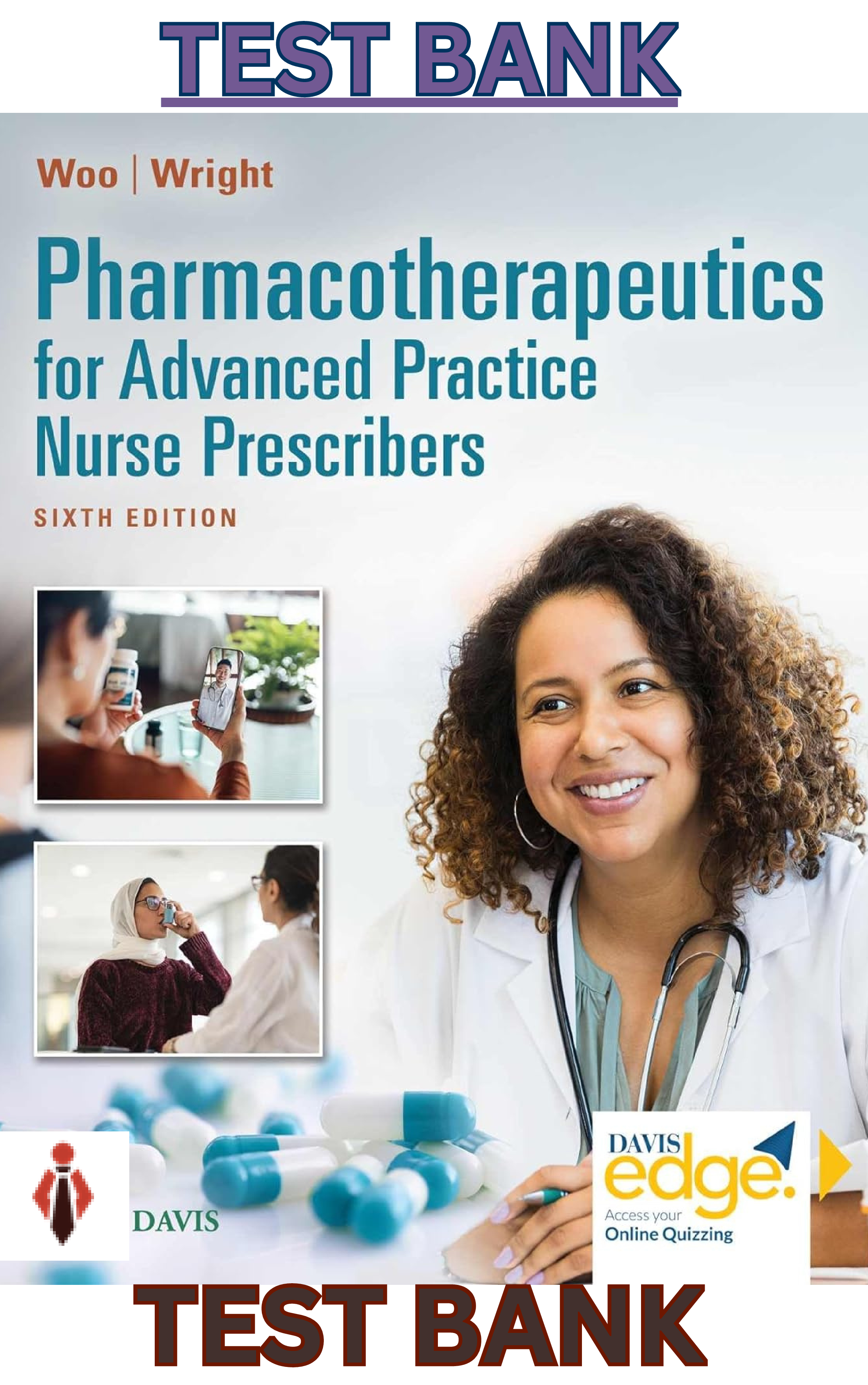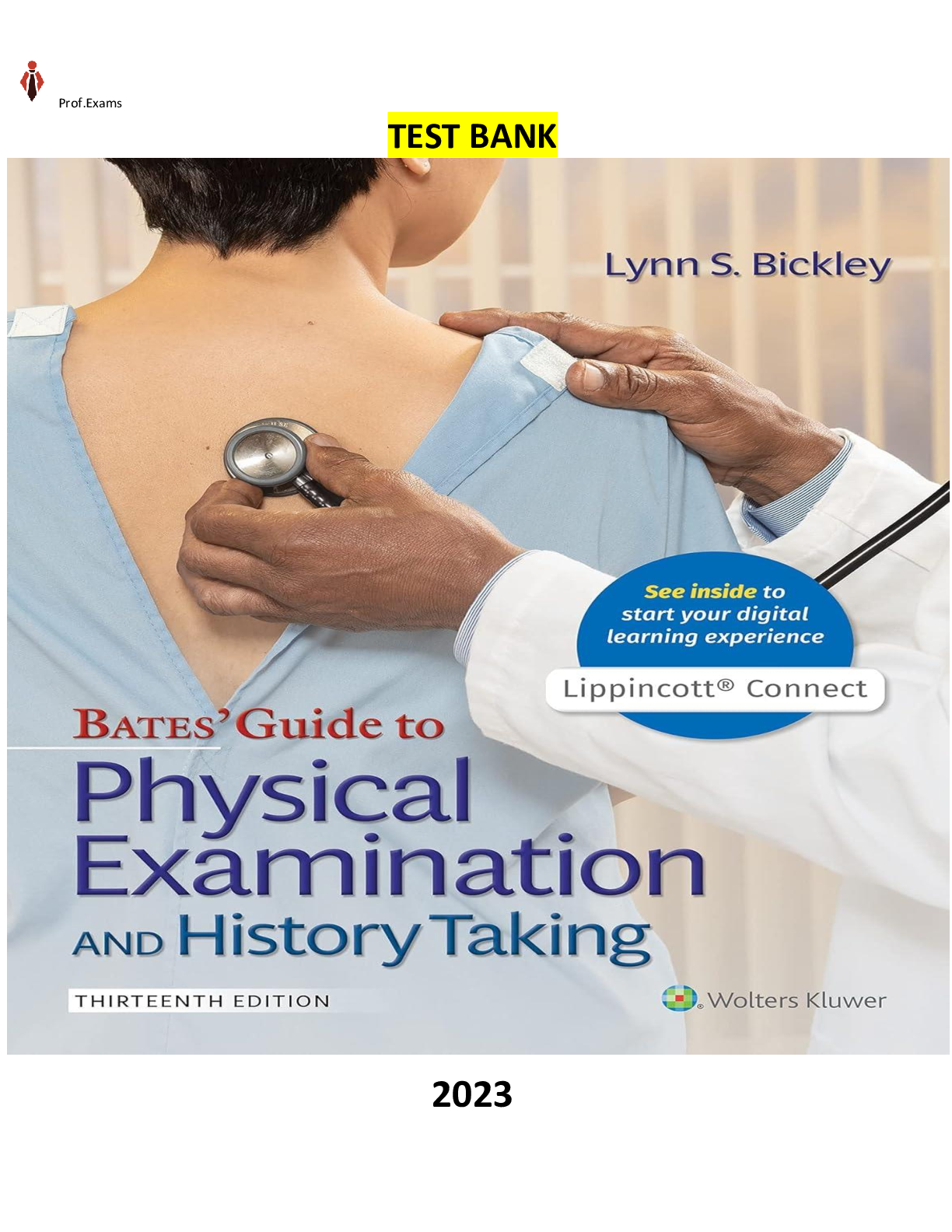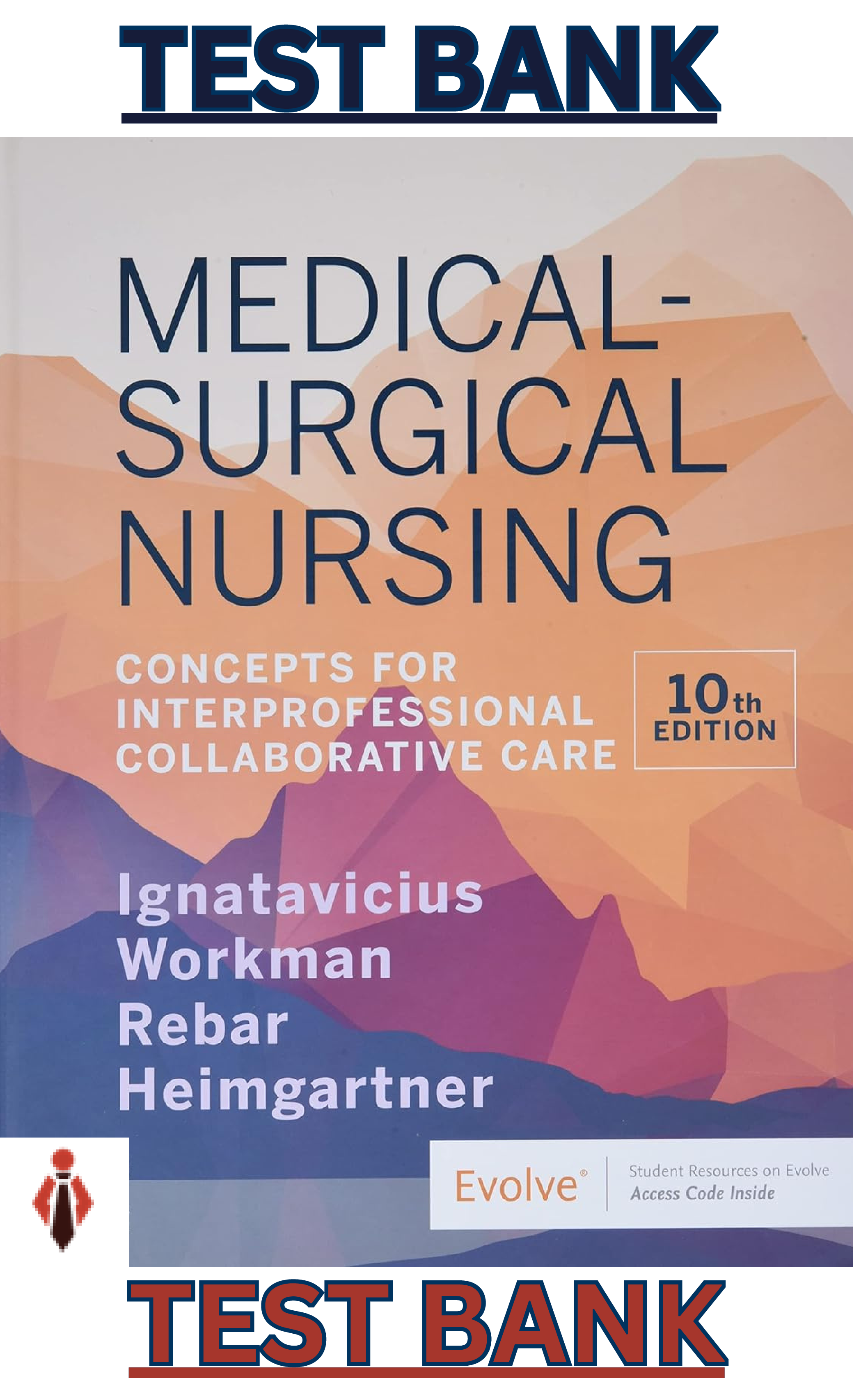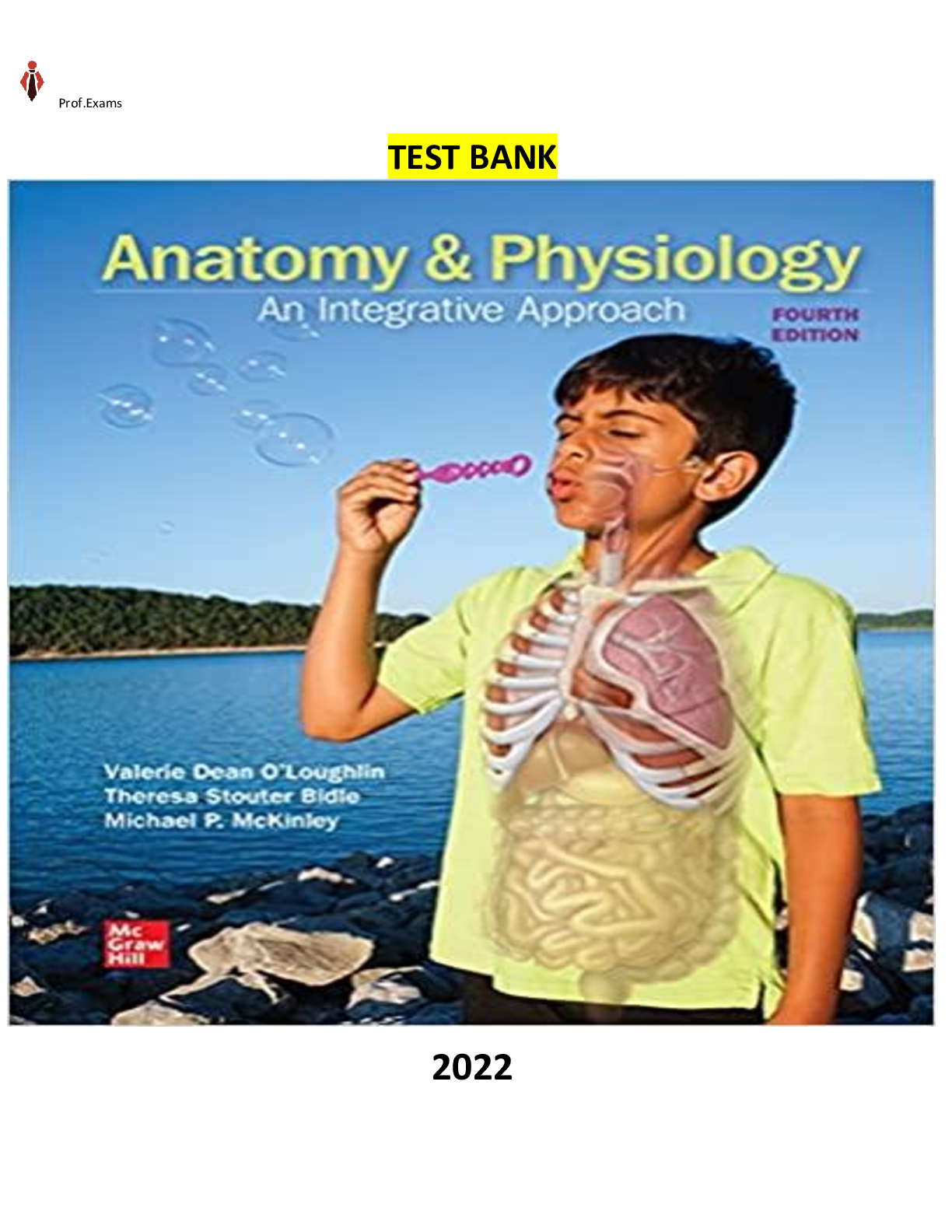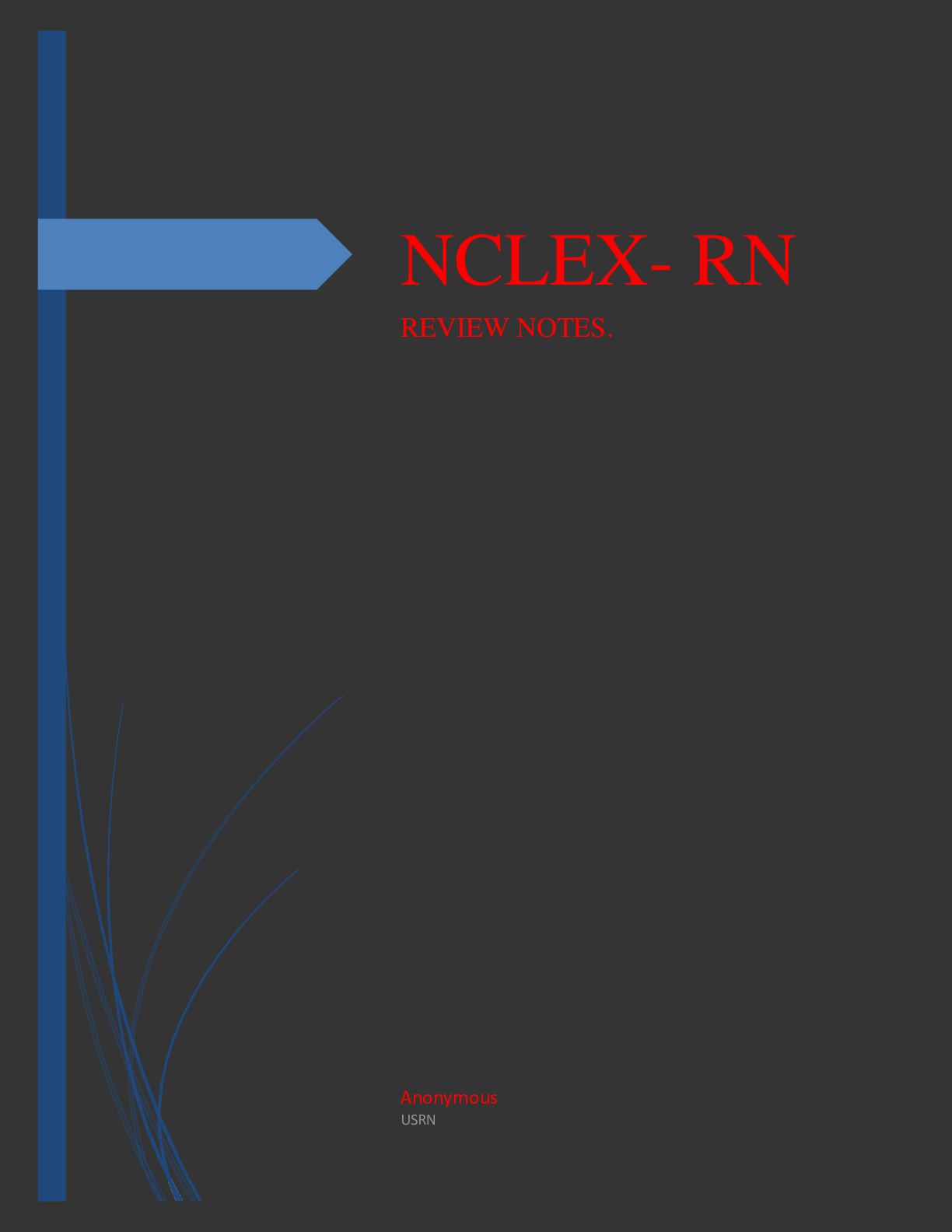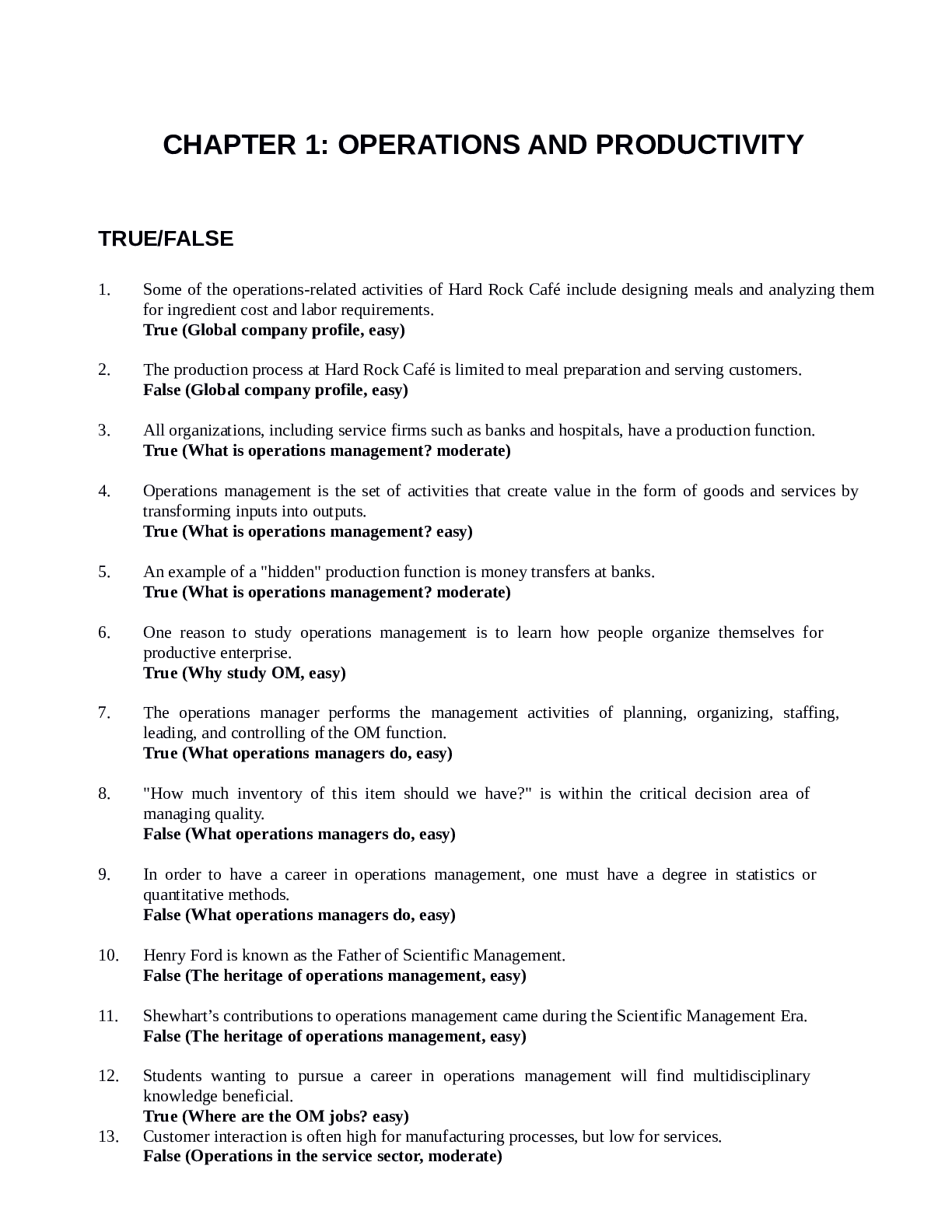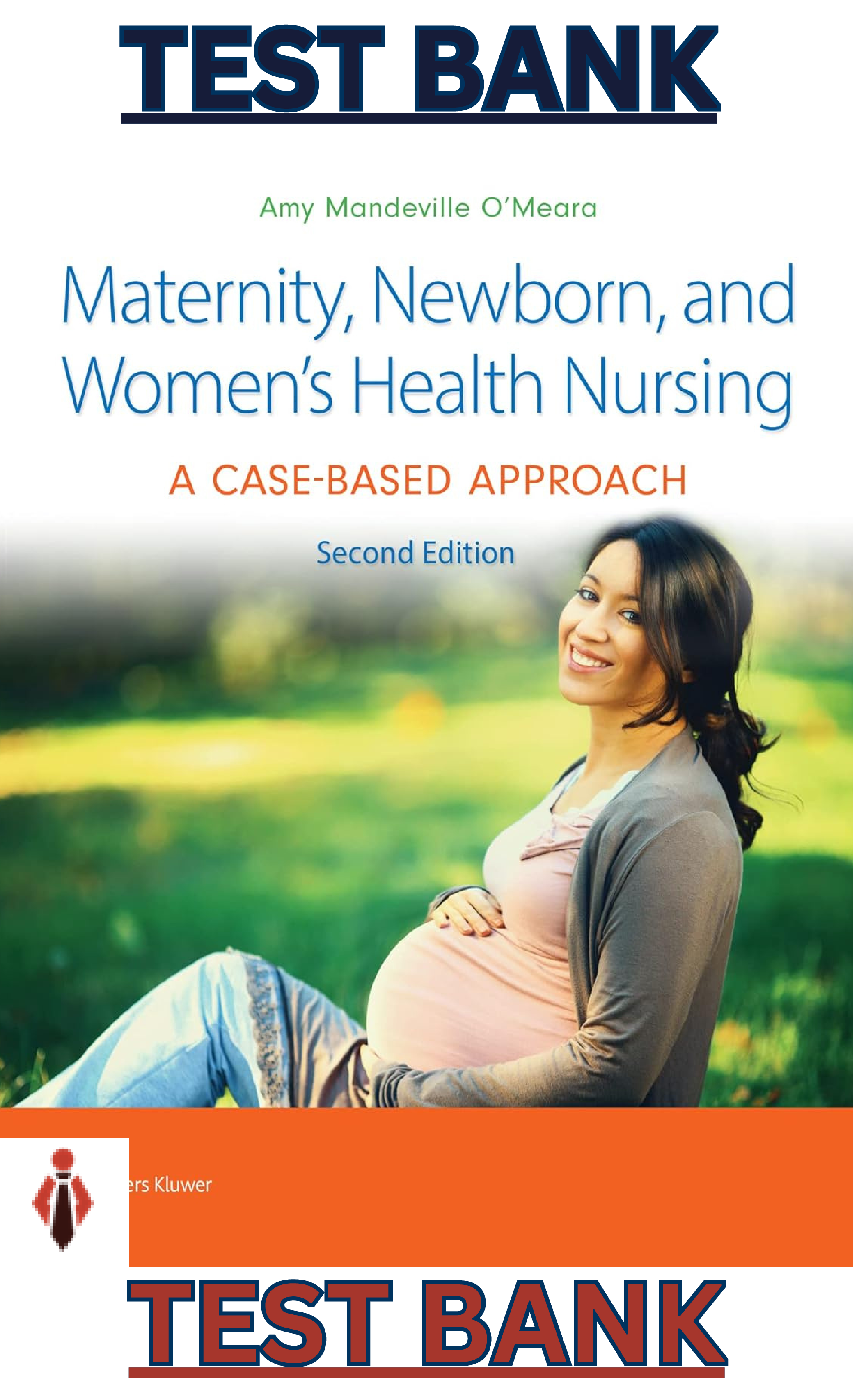*NURSING > TEST BANKS > Test Bank for Critical Care Nursing: Diagnosis and Management 9th Edition by Linda Urden, Kathleen S (All)
Test Bank for Critical Care Nursing: Diagnosis and Management 9th Edition by Linda Urden, Kathleen Stacy & Mary Lough - Complete, Elaborated & Latest Test Bank. ALL Chapters (1-40) Included & Updated
Document Content and Description Below
Test Bank for Critical Care Nursing: Diagnosis and Management 9th Edition by Linda Urden, Kathleen Stacy & Mary Lough - Complete, Elaborated & Latest Test Bank. ALL Chapters (1-40) Included & Updated ... Title: Test Bank for Critical Care Nursing: Diagnosis and Management 9th Edition by Linda Urden, Kathleen Stacy & Mary Lough - Complete, Elaborated & Latest Test Bank. ALL Chapters (1-40) Included & Updated Test Bank for Critical Care Nursing;Diagnosis & Management 9th Edition by Linda Urden,Stacy & Lough #CriticalCareNursing #IntensiveCareInsights #PatientManagement #CardiovascularCare #PulmonarySupport #NeurologicalCare #KidneyHealth #GastrointestinalCare #EndocrineDisorders #TraumaNursing #SepsisManagement #PediatricCriticalCare #OlderAdultCare #OrganTransplantation #PalliativeNursing UNIT 1: FOUNDATIONS OF CRITICAL CARE NURSING Chapter 1. Critical Care Nursing Practice Chapter 2. Ethical Issues Chapter 3. Legal Issues Chapter 4. Genetic Issues Chapter 5. Facilitating Care Transitions New title/focus! Chapter 6. Psychosocial and Spiritual Considerations New title/focus! Chapter 7. Nutrition Alterations and Management New title/focus! Chapter 8. Pain and Pain Management Chapter 9. Sedation, Agitation, and Delirium Management Chapter 10. Palliative and End-of-Life Care UNIT 2: CARDIOVASCULAR ALTERATIONS Chapter 11. Cardiovascular Anatomy and Physiology Chapter 12. Cardiovascular Clinical Assessment Chapter 13. Cardiovascular Diagnostic Procedures Chapter 14. Cardiovascular Disorders Chapter 15. Cardiovascular Therapeutic Management UNIT 3: PULMONARY ALTERATIONS Chapter 16. Pulmonary Anatomy and Physiology Chapter 17. Pulmonary Clinical Assessment Chapter 18. Pulmonary Diagnostic Procedures Chapter 19. Pulmonary Disorders Chapter 20. Pulmonary Therapeutic Management UNIT 4: NEUROLOGIC ALTERATIONS Chapter 21. Neurologic Anatomy and Physiology Chapter 22. Neurologic Clinical Assessment and Diagnostic Procedures Chapter 23. Neurologic Disorders and Therapeutic Management UNIT 5: KIDNEY ALTERATIONS Chapter 24. Kidney Anatomy and Physiology Chapter 25. Kidney Clinical Assessment and Diagnostic Procedures Chapter 26. Kidney Disorders and Therapeutic Management UNIT 6: GASTROINTESTINAL ALTERATIONS Chapter 27. Gastrointestinal Anatomy and Physiology Chapter 28. Gastrointestinal Clinical Assessment and Diagnostic Procedures Chapter 29. Gastrointestinal Disorders and Therapeutic Management UNIT 7: ENDOCRINE ALTERATIONS Chapter 30. Endocrine Anatomy and Physiology Chapter 31. Endocrine Clinical Assessment and Diagnostic Procedures Chapter 32. Endocrine Disorders and Therapeutic Management UNIT 8: MULTISYSTEM ALTERATIONS Chapter 33. Trauma Chapter 34. Shock, Sepsis, and Multiple Organ Dysfunction Syndrome Chapter 35. Burns Chapter 36. Organ Donation and Transplantation Chapter 37. Hematologic and Oncologic Emergencies UNIT 9: SPECIAL POPULATIONS Chapter 38. The Obstetric Patient Chapter 39. The Pediatric Patient Chapter 40. The Older Adult Patient Title: Test Bank for Critical Care Nursing: Diagnosis and Management 9th Edition by Linda Urden, Kathleen Stacy & Mary Lough - Complete, Elaborated & Latest Test Bank. ALL Chapters (1-40) Included & Updated TABLE OF CONTENTS UNIT ONE: FOUNDATIONS IN CRITICAL CARE NURSING 1. Caring for the Critically Ill Patient 2. Ethical and Legal Issues 3. Facilitating Care Transitions UNIT TWO: COMMON PROBLEMS IN CRITICAL CARE 4. Psychosocial and Spiritual Considerations 5. Nutritional Alterations and Management 6. The Older Adult 7. Pain and Pain Management 8. Sedation and Delirium Management 9. Palliative and End-of-Life Care UNIT THREE: CARDIOVASCULAR ALTERATIONS 10. Cardiovascular Clinical Assessment and Diagnostic Procedures 11. Cardiovascular Disorders 12. Cardiovascular Therapeutic Management UNIT FOUR: PULMONARY ALTERATIONS 13. Pulmonary Clinical Assessment and Diagnostic Procedures 14. Pulmonary Disorders 15. Pulmonary Therapeutic Management UNIT FIVE: NEUROLOGICAL ALTERATIONS 16. Neurological Clinical Assessment and Diagnostic Procedures 17. Neurologic Disorders and Therapeutic Management UNIT SIX: KIDNEY ALTERATIONS 18. Kidney Clinical Assessment and Diagnostic Procedures 19. Kidney Disorders and Therapeutic Management UNIT SEVEN: GASTROINTESTINAL ALTERATIONS 20. Gastrointestinal Clinical Assessment and Diagnostic Procedures 21. Gastrointestinal Disorders and Therapeutic Management UNIT EIGHT: ENDOCRINE ALTERATIONS 22. Endocrine Clinical Assessment and Diagnostic Procedures 23. Endocrine Disorders and Therapeutic Management UNIT NINE: MULTISYSTEM ALTERATIONS 24. Trauma 25. Burns 26. Shock, Sepsis, and Multiple Organ Dysfunction Syndrome 27. Hematological and Oncological Emergencies SAMPLE QUESTIONS: Chapter_01.bnk MULTIPLE CHOICE 1. What type of practitioner has a broad depth of specialty knowledge and expertise and manages complex clinical and system issues? a. Registered nurses b. Advanced practice nurses c. Clinical nurse leaders d. Intensivists ANS: b Advanced practice nurses (APNs) have a broad depth of knowledge and expertise in their specialty area and manage complex clinical and systems issues. Intensivists are medical practitioners who manage the critical ill patient. Registered nurses (RNs) are generally direct care providers. Clinical nurse leaders (CNLs) generally do not manage system issues. PTS: 1 DIF: Cognitive Level: Remembering OBJ: Nursing Process Step: N/A TOP: Caring for the Critically Ill Patient MSC: NCLEX: Safe and Effective Care Environment: Coordinated Care 2. What type of practitioner is instrumental in ensuring care that is evidence based and that safety programs are in place? a. Clinical nurse specialist b. Advanced practice nurse c. Registered nurses d. Nurse practitioners ANS: a Clinical nurse specialists (CNSs) serve in specialty roles that use their clinical, teaching, research, leadership, and consultative abilities. They are instrumental in ensuring that care is evidence based and that safety programs are in place. Advanced practice nurses (APNs) have a broad depth of knowledge and expertise in their specialty area and manage complex clinical and systems issues. Registered nurses are generally direct care providers. Nurse practitioners (NPs) manage direct clinical care of groups of patients. PTS: 1 DIF: Cognitive Level: Remembering OBJ: Nursing Process Step: N/A TOP: Caring for the Critically Ill Patient MSC: NCLEX: Safe and Effective Care Environment: Coordinated Care 3. Which professional organization administers critical care certification exams for registered nurses? a. State Board of Registered Nurses b. National Association of Clinical Nurse Specialist c. Society of Critical Care Medicine d. American Association of Critical-Care Nurses ANS: d American Association of Critical-Care Nurses (AACN) administers certification exams for registered nurses. The State Board of Registered Nurses (SBON) does not administer certification exams. National Association of Clinical Nurse Specialists (NACNS) does not administer certification exams. Society of Critical Care Medicine (SCCM) does not administer nursing certification exams for registered nurses. PTS: 1 DIF: Cognitive Level: Remembering OBJ: Nursing Process Step: N/A TOP: Caring for the Critically Ill Patient MSC: NCLEX: Safe and Effective Care Environment: Coordinated Care 4. The American Association of Critical-Care Nurses (AACN) has developed short directives that can be used as quick references for clinical use that are known as: a. critical care protocol. b. practice policies. c. evidence-based research. d. practice alerts. ANS: d The American Association of Critical-Care Nurses (AACN) has promulgated several evidence-based practice summaries in the form of "practice alerts." Evidence-based nursing practice considers the best research evidence on the care topic along with clinical expertise of the nurse and patient preferences. Critical care protocol and practice policies are established by individual institutions. PTS: 1 DIF: Cognitive Level: Remembering OBJ: Nursing Process Step: Planning TOP: Caring for the Critically Ill Patient MSC: NCLEX: Safe and Effective Care Environment: Coordinated Care 5. What type of therapy is an option to conventional treatment? a. Alternative b. Holistic c. Complementary d. Individualized ANS: a The term alternative denotes that a specific therapy is an option or alternative to what is considered conventional treatment of a condition or state. The term complementary was proposed to describe therapies that can be used to complement or support conventional treatments. Holistic care focuses on human integrity and stresses that the body, mind, and spirit are interdependent and inseparable. Individualized care recognizes the uniqueness of each patient's preferences, condition, and physiologic and psychosocial status. PTS: 1 DIF: Cognitive Level: Remembering OBJ: Nursing Process Step: Implementation TOP: Caring for the Critically Ill Patient MSC: NCLEX: Physiological Integrity: Basic Care and Comfort 6. Guided imagery and massage are both examples of what type of treatment? a. Alternative therapy b. Holistic care c. Complementary care d. Individualized care ANS: c The term complementary was proposed to describe therapies that can be used to complement or support conventional treatments. Guided imagery, massage, and animal-assisted therapy are all examples of complementary care. The term alternative denotes that a specific therapy is an option or alternative to what is considered conventional treatment of a condition or state. Holistic care focuses on human integrity and stresses that the body, mind, and spirit are interdependent and inseparable. Individualized care recognizes the uniqueness of each patient's preferences, condition, and physiologic and psychosocial status. PTS: 1 DIF: Cognitive Level: Understanding OBJ: Nursing Process Step: Implementation TOP: Caring for the Critically Ill Patient MSC: NCLEX: Physiological Integrity: Basic Care and Comfort 7. A patient was admitted to a rural critical care unit in Montana. Critical care nurses are assisting with monitoring and care of the patient from the closest major city. What is this type of practice termed? a. Tele-nursing b. Tele-ICU c. Tele-informatics d. Tele-hospital ANS: b Tele-ICU is a form of telemedicine. Telemedicine was initially used in outpatient areas, remote rural geographic locations, and areas where there was a dearth of medical providers. Currently, there are tele-ICUs in areas where there are limited resources on-site. However, experts (critical care nurses, intensivists) are located in a central distant site. PTS: 1 DIF: Cognitive Level: Understanding OBJ: Nursing Process Step: Evaluation TOP: Caring for the Critically Ill Patient MSC: NCLEX: Physiological Integrity: Reduction of Risk Potential 8. Which core competency for interprofessional practice can be described as working with individuals of other professions to maintain a climate of mutual respect and shared values? a. Interprofessional teamwork and team-based care b. Values and ethics for interprofessional practice c. Interprofessional communication d. Roles and responsibilities for collaborative practice ANS: b Values and ethics for interprofessional practice mean working with individuals of other professions to maintain a climate of mutual respect and shared values. Roles and responsibilities for collaborative practice include using knowledge of one's own role and the roles of other professions to appropriately assess and address the health care needs of the patients and populations served. Interprofessional communication includes communicating with patients, families, communities, and other health professionals in a responsive and responsible manner that supports a team approach to maintaining health and treatment of disease. Interprofessional teamwork and team-based care means applying relationship-building values and principles of team dynamics to perform effectively in different team roles to plan and deliver patient population-centered care that is safe, timely, efficient, effective, and equitable. PTS: 1 DIF: Cognitive Level: Remembering OBJ: Nursing Process Step: N/A TOP: Caring for the Critically Ill Patient MSC: NCLEX: Safe and Effective Care Environment: Coordinated Care 9. Which nursing intervention continues to be one of the most error-prone for critical care nurses? a. Inappropriate care b. Intimidating and disruptive clinician behavior c. Injury to patients by falls d. Medication administration ANS: d Medication administration continues to be one of the most error-prone nursing interventions for critical care nurses. Intimidating and disruptive clinician behaviors can lead to errors and preventable adverse patient outcomes. Patient safety has been described as an ethical imperative and one that is inherent in health care professionals' actions and interpersonal processes; examples include inappropriate care and injury to patients by falls. PTS: 1 DIF: Cognitive Level: Understanding OBJ: Nursing Process Step: Implementation TOP: Caring for the Critically Ill Patient MSC: NCLEX: Safe and Effective Care Environment: Safety and Infection Control 10. A practitioner and nurse are performing a dressing change on an unresponsive patient in room 14. The practitioner asks the nurse for an update on the patient in room 13. Which action should the nurse take next? a. Give the update to the practitioner. b. Refuse to give the update because of Health Insurance Portability and Accountability Act (HIPAA) requirements. c. Give the update because the patient is unconscious. d. Refuse to give the update because of Occupational Safety and Health Administration (OSHA) requirements. ANS: b Most specific to critical care clinicians is the privacy and confidentiality related to protection of health care data. This has implications when interacting with family members and others and the often very close work environments, tight working spaces, and emergency situations. A patient's unconscious state is not a reason for another patient's care to be discussed in his or her presence. Research shows hearing is the last sense to deteriorate. Occupational Safety and Health Administration (OSHA) has to do with safety in the workplace, not privacy and confidentiality. PTS: 1 DIF: Cognitive Level: Applying OBJ: Nursing Process Step: Implementation TOP: Caring for the Critically Ill Patient MSC: NCLEX: Safe and Effective Care Environment: Coordinated Care 11. Which units can provide high-quality and cost-effective care for patients who are less complex, more stable, and have a decreased need for physiologic monitoring? a. Intensive care units b. Triage units c. Progressive care units d. Medical surgical units ANS: c A growing trend in acute care settings is the designation of progressive care units, considered to be part of the continuum of critical care. These units can serve as a bridge between intensive care units and medical-surgical units, while providing high-quality and cost-effective care at the same time. Patients who are ideal candidates for progressive care are less complex, more stable, have a decreased need for physiologic monitoring, and more self-care capabilities. PTS: 1 DIF: Cognitive Level: Understanding OBJ: Nursing Process Step: N/A TOP: Caring for the Critically Ill Patient MSC: NCLEX: Safe and Effective Care Environment: Coordinated Care. [Show More]
Last updated: 8 months ago
Preview 1 out of 465 pages

Buy this document to get the full access instantly
Instant Download Access after purchase
Buy NowInstant download
We Accept:

Reviews( 0 )
$32.00
Can't find what you want? Try our AI powered Search
Document information
Connected school, study & course
About the document
Uploaded On
Apr 01, 2023
Number of pages
465
Written in
Additional information
This document has been written for:
Uploaded
Apr 01, 2023
Downloads
0
Views
164

